This old bridge in Perak is actually a National Heritage. Here’s why it’s so special.
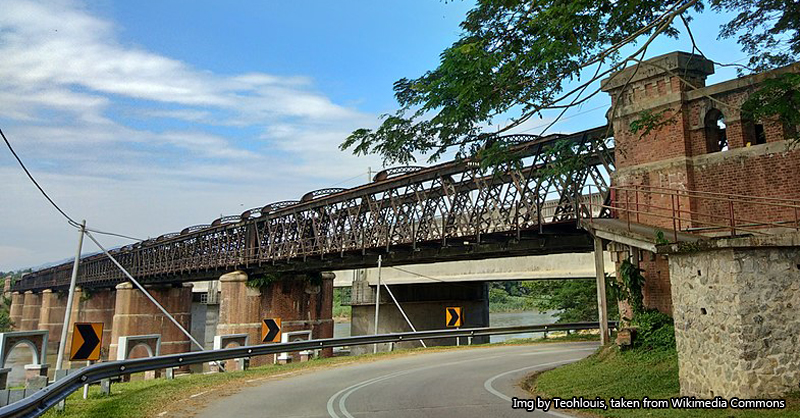
- 486Shares
- Facebook426
- Twitter6
- LinkedIn7
- Email12
- WhatsApp35
If you’re traveling down the North-South Highway, take the Kuala Kangsar exit, drive past the royal city, and wander around for a while. You might end up in Karai, a backwater town so unimpressive that various literature had described it as ‘sleepy’ and ‘somewhat gloomy‘. We didn’t say ar.
“From that day, Karai has run down and many visitors has [sic] regarded Karai as ghost town, sleepy town, or lost town.” – excerpt from Karai’s d’village Hotel’s statement.
But if you drive around for a while longer, you might stumble into an impressive sight: an old railway bridge crossing the Perak river, supported by massive pillars of red brick.
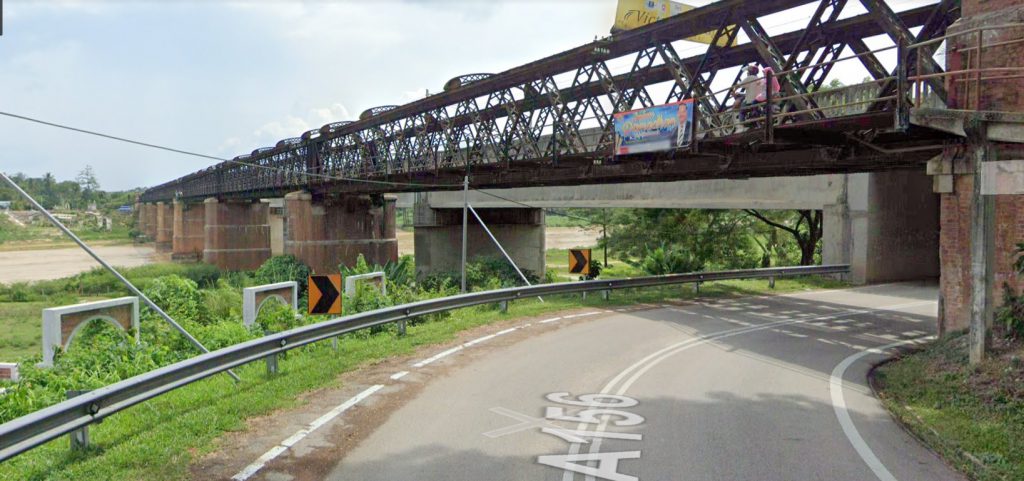
That’s the Victoria Bridge, aka the Enggor Bridge, one of the oldest railway bridges we have in Malaysia. The only other old railway bridge we know of is the Guillemard Bridge in Kelantan, but while the Guillemard Bridge was completed in 1924, this Victoria Bridge was opened on 21 March 1900, making it possibly the oldest railway bridge in Malaysia – 122 years old in 2022.
There’s an interesting story about why such a majestic bridge can be found hidden away in Karai, and it didn’t have anything to do with tin mining. Instead…
Karai was the only town in Perak developed for coal mining
During the British era, they developed several towns in Perak due to their economic importance. While most of the towns had something to do with tin mining, agriculture, fishery, or trading, Karai was the only one where coal mining was a thing. As the story goes, sometime in the 1890s a Chinese farmer by the name of Hok Hin Hoh discovered coal in the area, while he was planting rubber on a piece of leased land.

While Triple H was credited with Karai’s coal discovery, coal mining in the state was soon taken over and monopolized by a company called Enggor Coal Syndicate Ltd. It should be noted that Enggor was the name given to a part of Karai by the British after the coal discovery, inspired by Enggor Street in Singapore.
At its peak, the coal-field in Enggor spans 21 acres with a depth of 40 meters, with production reaching 3000 tonnes a month. Coal was kind of important at the time, being used to power trains and other industries, so the town of Karai prospered around the activity. Shophouses built during its golden (sooty?) era still stands today, and infrastructure like the Victoria Bridge was also part of this development.
Previously, coal was transported across the Perak River by a pontoon bridge – a floating bridge built over boats – after which it will be put on a train headed for Teluk Anson on the other side. However, in 1897 a huge flood washed the pontoon bridge as well as a locomotive away, so they decided to quickly build a stronger bridge, far away from the water. So 3 years, another huge flood, and $325,000 (probs in Straits dollars) later, an iron lattice bridge supported by seven brick piers was completed, sitting at a comfortable height of 12 meters above the normal water level.
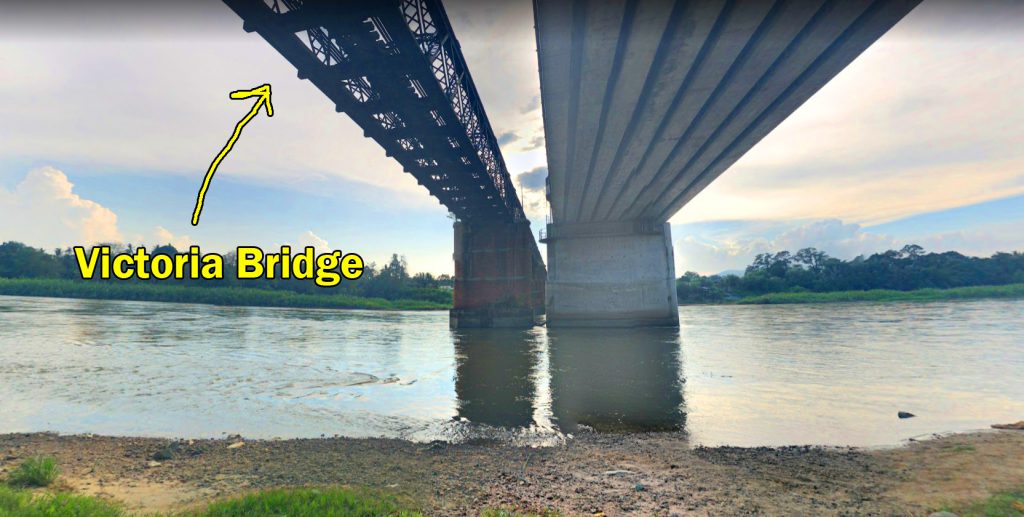
Named after Queen Victoria I, then the monarch of the British Empire, the bridge was formally opened by Sultan Idris Murshidul Adzam Shah (then Perak Sultan) and Sir Frank Swettenham (then Perak’s state Resident) on 21 March 1900. With a more efficient coal transportation and a train station, Karai and Enggor became the place to be. However…
The bridge soon faded into obscurity, until recently
Remember the ‘From that day’ part from the quote in the beginning of this article? Karai’s coal fame was relatively short-lived. By 1928, petroleum-based fuels became popular, and the demand and prices for coal dropped so much that Enggor’s coal mining operations stopped down entirely. The town’s economy shifted back to rubber planting, but it can be said that Karai and Enggor never recovered their fame since.
But what happened to the bridge? During the Japanese invasion, it was blown up partially by the British to slow down Japan’s advance from Kelantan, but it was later rebuilt using wood from local trees. Since then and throughout the Emergency, pillboxes were built around the area to safeguard the point, some of which you can still see today. Somewhere along the way, the Enggor train station seemed to become obsolete, with trains from Johor Bharu and Prai just passing by but not stopping in Enggor like they used to.
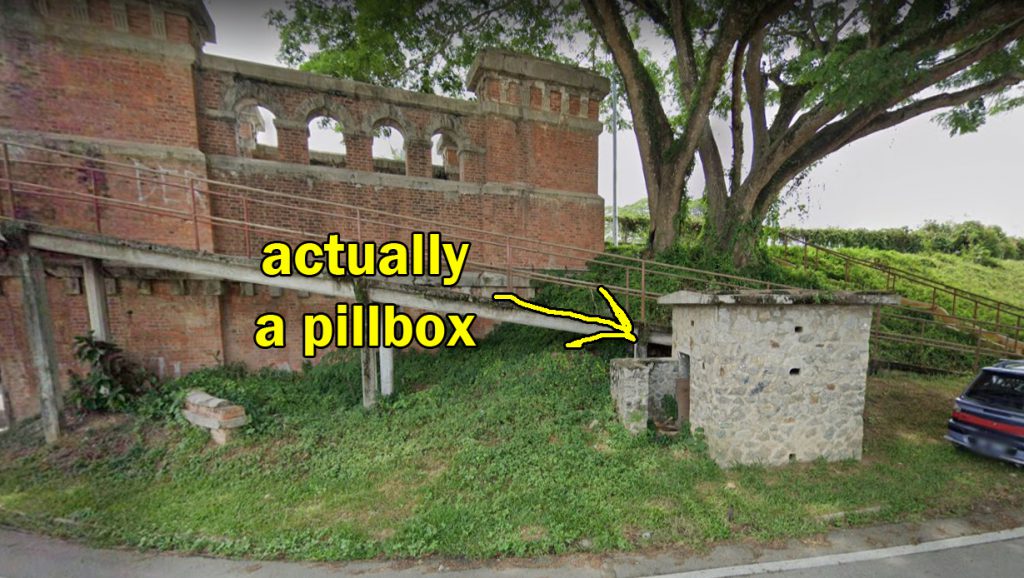
The fate of the bridge itself seemed to be sealed in 2002, when a newer two-line bridge made of concrete was built right next to it. Victoria bridge had since been retired from trains, and although villagers had been using it to cross the river on foot or on motorcycles, it laid neglected for a while, overgrown with weeds. The authorities had been trying to make it into a proper tourist attraction starting 2013, though. The bridge was cleaned up and restored, and in 2016 they managed to make the Department of National Heritage officially recognize it as a National Heritage.
Today, Victoria Bridge seems to be a full-fledged tourism spot, with pictures online showing proper facilities and even interpretive panels telling you about the place’s history set up around the area. But even without the history and heritage aspect of it, the bridge itself seems like a good place for photography: some sites mention wedding shoots being conducted there, and even the Google street view pictures of the place seems pretty enough for the ‘gram. Just don’t fall through the cracks.
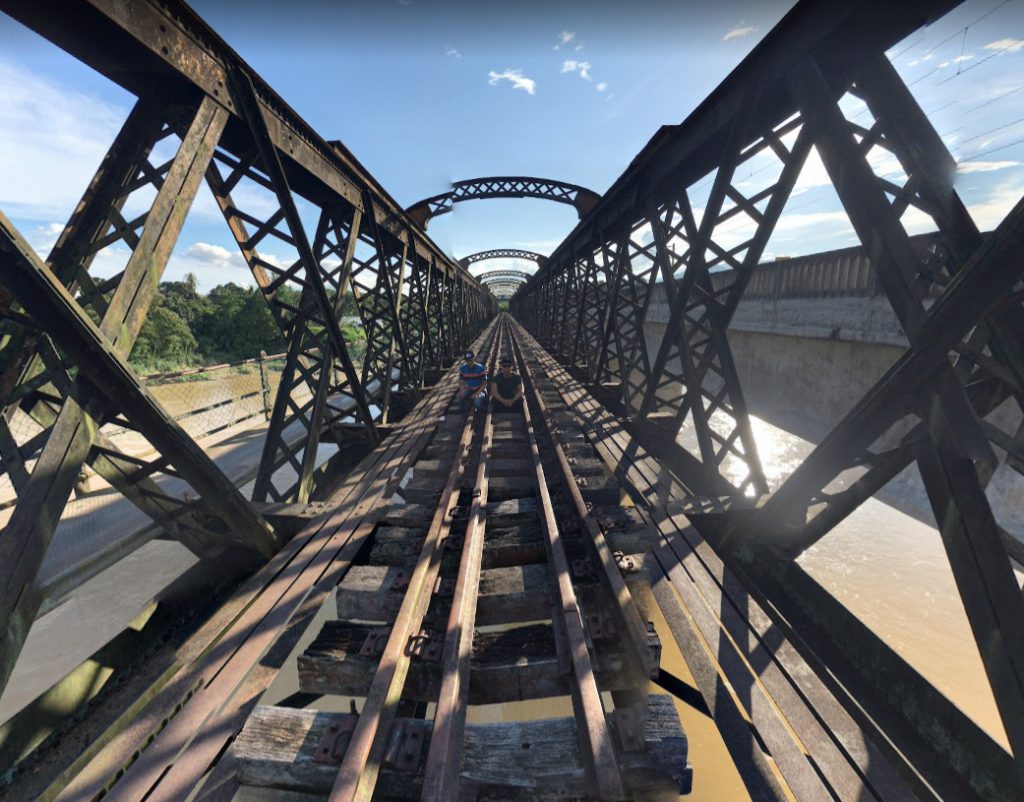
So while the days of coal for the bridge have long since gone, perhaps the authorities have this time recognized and chose to preserve a diamond in the rough.
- 486Shares
- Facebook426
- Twitter6
- LinkedIn7
- Email12
- WhatsApp35
